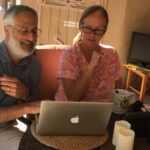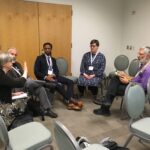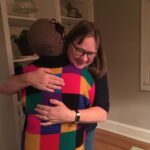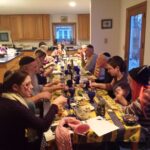Experience Sharing Success Stories
By: Barry Glicklich, Katherine Lato and Maryanna Milton
Published: September 10, 2019, Links last verified 1/15/23.
Thanks to everyone who shared their stories with us.
1 Background
1.1 Why tell stories?
Stories are important. Don Hewitt, the creator and head of “60 Minutes” for 36 years, would say these four words whenever someone came with a pitch: “Tell me a story.” As https://allgoodtales.com/2019-year-tell-great-stories/ notes: “We tell stories to share concepts and ideas. We tell stories to make others laugh and we tell stories to become closer to people.”
Stories help put a human face on the work we do, touching the emotions of the reader/listener in a way that numbers and measurable impacts do not. Both are needed to effectively communicate to donors, volunteers, and staff the motivation behind doing what we do. Storytelling is the single most important tradition that humans participate in. The ability to learn from past decisions and apply that knowledge for insight to our problems gives us an advantage rarely found in other species, a communal knowledge pool. In the process of collecting stories by listening to their users, agencies can identify opportunities that enable them to improve their programs and better meet users’ needs.
Stories can be shared in many ways. Visual images of lives being impacted are often an important aspect of sharing the stories, helping to put a human face on the work of digital inclusion. Some agencies post thank-you letters from recipients, either physically within the office or on-line when their clients are willing to be publicly identified in this way. Stories can be told without identifying the person, sharing the inspiration without sharing private details. We hope you find inspiration in these stories.
1.2 Story Categories
 While many stories could go in multiple categories, we did our best to put a little order to the stories to make them easier to read and digest. Collecting stories is a worthwhile enterprise as Daniel Noyes of Tech Goes Home says, “We spend a great deal of time and resources to ensure we collect as much data as possible. This includes stories from everyone who wants to share them. Truth is, we have found that given the opportunity, people are more than happy to do so.” Ways to collect stories include intake surveys when a learner starts and a survey after completing the course. While this can take time, it works out as a good summer project for an intern.
While many stories could go in multiple categories, we did our best to put a little order to the stories to make them easier to read and digest. Collecting stories is a worthwhile enterprise as Daniel Noyes of Tech Goes Home says, “We spend a great deal of time and resources to ensure we collect as much data as possible. This includes stories from everyone who wants to share them. Truth is, we have found that given the opportunity, people are more than happy to do so.” Ways to collect stories include intake surveys when a learner starts and a survey after completing the course. While this can take time, it works out as a good summer project for an intern.
2 The stories
2.1 Learning from each other
A Tech Goes Home trainer was a parent who graduated from the program many years ago. Because of TGH, she became a co-founder/program administrator of a nonprofit for school age children and uses all of her tech knowledge gained at TGH to elevate her skills, herself and her children. Then, as a trainer, she is helping families do the same for their children. She’s come full circle. https://www.techgoeshome.org/
Nico Koenig from P2PU is inspired by the idea that “No one fails a learning circle.” Since people are learning from each other, as well as learning the class material, they always learn something. He has seen the power of learning circle groups forming relationships with one another, finding meaning and connections in their groups. At the end of a class, many people hug and express how simple and powerful the learning circles model is. “Learning circles help people learn better by learning together.” https://www.p2pu.org/en/
Tom Mehlert of AZStRUT was so impressed by two interns that he hired them on the staff. They inspire Tom to keep doing his work with AZStRUT. https://azstrut.org/
Katherine Lato of Partners Bridging the Digital Divide wrote several short stories about how the digital divide affects people. When an online critiquer suggested that the protagonist had to be at least 70, or his inexperience with computers wouldn’t be believed, it reinforced how many people don’t realize how deep the digital divide is and how it affects people of all ages and how necessary bridging that divide is. https://pbdd.org/creative-writing/
Dan Kent of Net Literacy found that by listening to users’ stories, he has identified opportunities that enabled them to improve programs and better meet users’ needs. After their first few Senior Connects classes at independent living facilities, they were pleasantly surprised by the completion rates and that interest in taking the program was higher than predicted. Net Literacy learned that seniors, and especially those that were somewhat technophobic, became more open to taking classes after they stopped by the multipurpose room and saw their neighbors using computers. Seniors also said that they were more comfortable because classes were held inside their homes (the independent living facility) rather than what some perceived as sometimes cold and sterile classrooms elsewhere. Also, most of the seniors taking classes didn’t have access to a computer and used the temporary computer labs to have fun online in between classes, which encouraged participation. Consequently, Net Literacy restructured their Senior Connects program to build permanent computer labs at independent living facilities and senior apartments. Had they not listened to the stories from users, they probably would have missed incorporating or maintaining aspects of the program that turned out to be quite helpful. https://www.netliteracy.org
2.2 Life skills
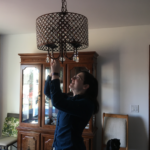
Lorelei Gautier of Technology Learning Collaborative gathers success stories at quarterly events and annual conferences. When consumers of digital literacy programs meet certain life goals such as educational attainment or employment, they cite digital literacy education as a factor in their success. Hearing about senior citizens who have adopted technology and use it as a way to stay connected with their loved ones touches her heart. http://www.tlcphilly.org/
William Stone of Lutheran Social Services of North Florida considers it a success that they hired two of their former volunteer interns to manage and conduct their Computer Refurbishing and Technical Assistance Program. It is great to both reward their service and the community with paying work; but to see their growth is terrific. Since they are an agency that works largely through collaboration with school social workers and case managers associated with non-profits, they mostly hear second hand about what positive things occur to the recipients of the refurbished technology. When they refurbished tablets and gave them to homeless individuals who were living rough, enabling them to access benefits and to reconnect with family, their lives were altered for the better which is inspiring. https://lssnf.org/
A Tech Goes Home trainer relates a story about how they received a picture of one of their students proudly wearing a department store smock with the caption “I got the job from the application I filled out in class.” https://www.techgoeshome.org/
2.3 Connecting
Dan Kent of Net Literacy paired a student with a senior for one-on-one computer and internet training. The seniors found that middle and high students teaching them how to use a computer was less threatening and even “cute”, reminding them of their grandchildren. Consequently, they changed the promotional materials to describe the program as one where friendly student volunteers would “adopt” a senior to teach them computer and internet skills on a one-to-one basis. https://www.netliteracy.org
Kayleigh Fleury from Techboomers notes that inspiration often comes from meeting and talking with people at gatherings and conferences like Net Inclusion. Since her day-to-day work developing training courses is often disconnected and hands-off from the users, hearing about non-profit organizations that make devices and internet connections available to people, many of whom use or want to use Techboomers materials, makes her feel connected. At conferences, she receives direct positive feedback and appreciation about her work. https://techboomers.com/
Heather Gate from Connected Nation believes that everyone belongs in a connected nation. After donating computers to a 6th grade class, one student thanked them for the computers so their mom didn’t have to travel as much taking the kids to the library. There were six in the family, so they couldn’t all go at the same time, but with a computer at home, she didn’t have to do as much traveling. https://connectednation.org/
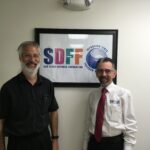 Barry Glicklich of Partners Bridging the Digital Divide, when people ask for a quick summary of the point of PBDD, he usually says it’s about sharing information, connecting people and saving our partner agencies time and energy. In particular, avoid having multiple agencies discover the hard way something someone else has already learned. When in San Diego a couple of years ago to develop a partner profile for Computers To San Diego Kids, they learned about another local organization. They met with Gary Knight from San Diego Future Foundations, and told him about the Net Inclusion conference and how useful it was. Gary believed them enough to sign up for the conference that week. While attending the conference, he gained a greater perspective about aspects of digital inclusion, and used this knowledge to change the structure of SDFF to better meet their clients needs and improve the focus of his organization. Partners Bridging the Digital Divide count that as a win for all involved. https://pbdd.org/
Barry Glicklich of Partners Bridging the Digital Divide, when people ask for a quick summary of the point of PBDD, he usually says it’s about sharing information, connecting people and saving our partner agencies time and energy. In particular, avoid having multiple agencies discover the hard way something someone else has already learned. When in San Diego a couple of years ago to develop a partner profile for Computers To San Diego Kids, they learned about another local organization. They met with Gary Knight from San Diego Future Foundations, and told him about the Net Inclusion conference and how useful it was. Gary believed them enough to sign up for the conference that week. While attending the conference, he gained a greater perspective about aspects of digital inclusion, and used this knowledge to change the structure of SDFF to better meet their clients needs and improve the focus of his organization. Partners Bridging the Digital Divide count that as a win for all involved. https://pbdd.org/
2.4 Overcoming challenges
Dan Kent of Net Literacy learned the value of data driven grant proposals thanks to Dr. Judith Erickson. They used the information to tell the story of how their programs impacted the community. By 2010, they had donated computers or constructed so many computer labs within the core urban center of Indianapolis and within the boundaries of the Indianapolis Public Schools system, that much of the area had a computer lab within a walkable five-block area. They mapped it and used the information to give grant proposals more impact. In 2011, they chronicled this information on their website to share their practices with other nonprofits, and then updated it in 2011 and 2012 as they channeled more of our resources outside of the central Indiana area. It was last updated in 2013. While they repurpose, distribute and distribute fewer computers today, this program hasn’t changed that much and there hasn’t been a need to update the page. https://www.netliteracy.org/research-and-outcomes-3/
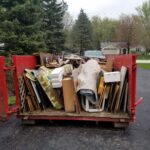 James Jack of Human-I-T loved learning but found it hard to excel in school. In the ’90s his mom bought a
James Jack of Human-I-T loved learning but found it hard to excel in school. In the ’90s his mom bought a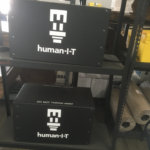 computer with an internet connection and it became a key source for self-education for any topic James was interested in. He dreamed of becoming an entrepreneur and educated himself with his computer. His plan was to make a lot of money in order to do good in the world. He spent the next decade + starting businesses but he always had a challenge scaling. While in line at Best Buy, a customer complained that his very expensive laptop had a virus. The repair geek said it would cost $200 to repair. The customer refused the repair and said he would just buy a new computer. James watched as the employee tossed the computer on a pile of broken computers. He decided then that his life experience could be put to use creating a non-profit that would refurbish discarded computers in order to distribute them to those in need. A year later he convinced a friend, with a complementary skill set to his own, to quit his job to start their nonprofit. https://www.human-
computer with an internet connection and it became a key source for self-education for any topic James was interested in. He dreamed of becoming an entrepreneur and educated himself with his computer. His plan was to make a lot of money in order to do good in the world. He spent the next decade + starting businesses but he always had a challenge scaling. While in line at Best Buy, a customer complained that his very expensive laptop had a virus. The repair geek said it would cost $200 to repair. The customer refused the repair and said he would just buy a new computer. James watched as the employee tossed the computer on a pile of broken computers. He decided then that his life experience could be put to use creating a non-profit that would refurbish discarded computers in order to distribute them to those in need. A year later he convinced a friend, with a complementary skill set to his own, to quit his job to start their nonprofit. https://www.human-
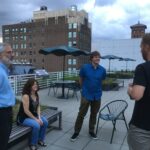 Grif Peterson from P2PU likes to talk about how the learning circles idea started over 5 years ago when a project at the Chicago Public Library branch in Edgewater talked about how to address low completion rates for online courses. At another branch, there were people in an interview course who said that the
Grif Peterson from P2PU likes to talk about how the learning circles idea started over 5 years ago when a project at the Chicago Public Library branch in Edgewater talked about how to address low completion rates for online courses. At another branch, there were people in an interview course who said that the 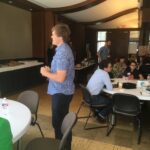 questions/curriculum that they were presented with online were not useful and related to their career fields. The group themselves came up with better questions and continued to meet and complete the coursework. It is inspiring how a group can help each other learn without anyone being in charge or trained for that. “Each person is an expert in their life experiences. They create their own learning space.” https://www.p2pu.org/en/
questions/curriculum that they were presented with online were not useful and related to their career fields. The group themselves came up with better questions and continued to meet and complete the coursework. It is inspiring how a group can help each other learn without anyone being in charge or trained for that. “Each person is an expert in their life experiences. They create their own learning space.” https://www.p2pu.org/en/
A Tech Goes Home trainer relates that a recent Small Business Graduate was in a shelter when she started the TGH program. Although she had always dreamed of opening a business, she never thought it would be possible. As she went through the course she began to see her vision as a reality. During her final presentation for the course, she said, “At first I saw my dream as impossible, but with perseverance, resources, and courses like TGH, the dream of owning my own business can become a reality.” Since the end of the course, she has moved out of a shelter into her own home, and is taking steps to open her own business. https://www.techgoeshome.org/
3 Conclusion
3.1 Sources of Stories
You can find other digital divide stories from the general media:
- https://www.marketplace.org/shows/marketplace-tech/homework-is-much-harder-when-you-cant-get-online-at-home
- https://www.marketplace.org/2018/08/14/tech/evenly-distributed/slow-internet-fast-internet-you-might-be-paying-same-price
3.2 Would you like to share your story?
Please send stories to: barry@pbdd.org.
3.3 Original Questions
We asked our partners via email or in person, the following questions:
- What is a success story?
- How do you collect them?
- What is the benefit to an organization of sharing stories?
- How are stories shared well?
